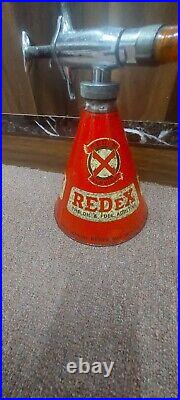

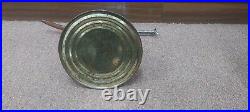

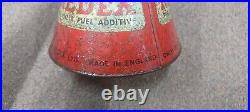
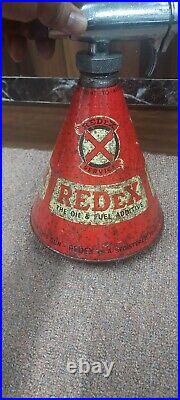
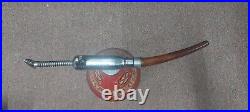
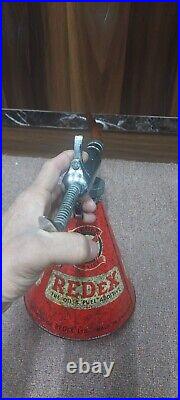
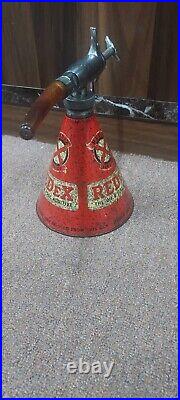
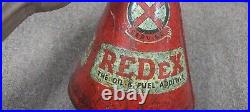

Vintage, antique, and rare J. Staedtler pencils made in Germany are highly regarded by collectors and enthusiasts for their quality, craftsmanship, and historical significance. Founded in 1835 by Johann Sebastian Staedtler in Nuremberg, Germany, the Staedtler brand quickly became one of the world’s leading manufacturers of pencils and other writing instruments. Their pencils, particularly those produced in the late 19th and early 20th centuries, have become valuable collector’s items due to their distinctive design, superior materials, and historical importance. Key Features of Vintage J. Historical Significance of Staedtler. Staedtler is one of the oldest pencil manufacturers in the world, with a heritage dating back to 1835. Over the years, Staedtler has been recognized for its innovations in pencil production, such as the introduction of the first pencil with an eraser and the development of special materials and graphite blends. Staedtler’s focus on quality craftsmanship and precision helped elevate the brand to a global standard, and vintage pencils made by Staedtler are seen as not only functional writing tools but also pieces of industrial design history. Wood Casing : Early Staedtler pencils often featured a high-quality wood casing, typically made from cedar or other durable woods, ensuring smooth sharpening and a comfortable grip. Graphite Core : Staedtler’s pencils were known for their premium graphite blend, which resulted in smooth writing. The quality of the graphite used in their pencils made them a favorite among artists, architects, and writers. Ferrules and Erasers : Some early Staedtler pencils featured metal ferrules (the metal band that holds the eraser in place), often decorated with engraved branding. While many early pencils did not have erasers, later models, especially those produced in the early 20th century, began to feature erasers at the end of the pencil. Types of Staedtler Pencils. Wooden Pencils : Staedtler’s classic wooden pencils are often the most collectible. These pencils typically feature a hexagonal or round shape, and early examples are often prized for their decorative engravings, especially on the ferrules. Mechanical Pencils : In addition to wooden pencils, Staedtler also produced high-quality mechanical pencils during the early-to-mid 20th century. These pencils often featured metal casings and advanced mechanisms for refilling and advancing the lead. The Staedtler Mars series, introduced in the 1930s, is particularly well-known. Colored Pencils : Staedtler also produced colored pencils, especially during the 20th century, that are sought after by collectors for their vibrant pigments and durable casings. Early Staedtler pencils were often marked with the J. Staedtler signature, along with other identifying features such as the company logo and hardness grade of the pencil e. H, B, 2B, etc. Many vintage Staedtler pencils also featured metal bands near the eraser, some of which were engraved with the Staedtler logo or other decorative details. Engraving and Stamping : Collectors are drawn to pencils with engraved or stamped logos that indicate their manufacturing era. The presence of such markings can help determine the age of the pencil and contribute to its rarity and value. Popular Staedtler Pencil Models. Staedtler Mars 9000 : This line, introduced in the early 20th century, is one of Staedtler’s most iconic and sought-after pencil models. It was initially made for artists and draftsmen, and it features a highly durable wood casing and smooth, consistent graphite. The Mars 9000 series is especially prized by collectors for its classic look and historical importance. Staedtler Noris : Another well-known Staedtler pencil, the Noris series, was first introduced in the 1930s. Known for its bright yellow and black striped design, the Noris line became one of Staedtler’s most recognizable products. Staedtler Lyra : While the Lyra brand is technically a separate company, it was acquired by Staedtler in the 1920s, and vintage Lyra pencils, particularly those made in the early to mid-20th century, are highly collectible. Vintage Staedtler pencils, particularly those from the 19th century and early 20th century, are highly valued by collectors due to their rarity and historical significance. The condition of the pencil plays a major role in determining its value. Mint condition pencils or those still in their original packaging can fetch significantly higher prices at auctions or online marketplaces. Limited edition pencils or those produced for special events (such as World Fairs or expositions) are particularly sought after by collectors. Where to Find Vintage Staedtler Pencils. Many sellers provide detailed descriptions and photographs, which help collectors assess the condition and authenticity of the items. Online pencil forums and collector websites can also be useful for finding rare Staedtler pencils and connecting with other enthusiasts. Antique stationery shops or stores that specialize in vintage office supplies often carry vintage Staedtler pencils. If you’re looking for high-quality or rare items, visiting these stores in person can yield some unexpected treasures. Antique malls or shops specializing in writing instruments may also feature Staedtler pencils, particularly older, rarer models. Pencil Shows and Collectors’ Fairs. Pen and pencil shows are ideal places to find rare Staedtler pencils. These shows provide a fantastic opportunity to meet other collectors and find hard-to-come-by items. Estate Sales and Auctions. Estate sales, particularly those of collectors or individuals who were passionate about vintage writing instruments, often feature old Staedtler pencils. Why Collect Staedtler Pencils? Staedtler pencils made in Germany represent the evolution of writing instruments and the high standards of German craftsmanship. Collecting these pencils allows you to own a piece of industrial history and witness the development of the pencil over time. Staedtler pencils were designed with durability and function in mind. Vintage Staedtler pencils often perform just as well as modern pencils, making them not only valuable for display but also functional tools for writing or drawing. The elegant design of Staedtler pencils, especially those from the early 20th century, appeals to collectors who appreciate vintage craftsmanship. The presence of metal ferrules, engraved logos, and distinctive shapes make them aesthetically pleasing objects as well as useful writing tools. Rare or limited edition Staedtler pencils have shown appreciation in value over time. As with any collectible, the value of vintage Staedtler pencils can increase, particularly if they are in excellent condition and retain their original packaging. Staedtler pencils made in Germany are cherished for their quality, historical importance, and craftsmanship. Collectors value them not only as writing tools but as pieces of history, representing the evolution of pencil design and the German tradition of fine craftsmanship. Whether you are drawn to the classic Staedtler Mars 9000, the vibrant Noris series, or rare mechanical pencils, owning a vintage Staedtler pencil is a way to connect with the rich heritage of one of the world’s most respected pencil manufacturers. Vintage antique old oil tin can redex Made in England. Vintage antique Redex oil tin cans made in England are collectible items sought after by enthusiasts of vintage petroleum products, automotive memorabilia, and industrial design. Redex is a well-known brand that was originally associated with engine treatments and fuel additives, widely used in the mid-20th century to improve the performance of vehicles. The brand, dating back to the 1930s, is often linked to the automobile industry in the UK, and its old oil tin cans have become collectible relics of that era. Key Features of Vintage Redex Oil Tin Cans. Historical Context of Redex. Redex was a popular brand of petrol additives and engine oils produced in England. The product gained fame particularly for its engine cleaning and fuel treatment properties in the 1940s through the 1970s. The brand was known for its advertisements that often showcased the benefits of using their products to improve the efficiency and longevity of car engines. Over time, the company evolved, but vintage Redex cans are still highly valued by collectors as pieces of automotive history. Tin Can Design : Vintage Redex oil cans are often characterized by their bold, eye-catching designs, typically featuring bright colors, particularly red (hence the name “Redex”), and sometimes yellow, white, or blue accents. The design frequently included vivid text advertising the product’s benefits, as well as logos. Typography and Branding : The Redex logo was usually printed in large, prominent text across the front of the can, with accompanying slogans or descriptors like “engine treatment, ” “cleaner, ” or fuel additive. The typography reflects the art deco and mid-century modern style popular in the mid-20th century, giving the cans a unique retro charm. Shape and Size : The typical vintage Redex oil can was cylindrical, with a metal body, and some featured a tin spout for pouring, which makes them distinctive as functional and collectible items. Early Redex Cans : Early Redex oil cans, particularly those from the 1930s to 1950s, are considered more rare and desirable. Cans from this period often feature unique designs, and their age makes them more valuable to collectors. Different Sizes and Versions : Redex cans were produced in various sizes, from small 1-gallon cans to larger versions, and collectible versions can be more valuable if they are in original condition and free from rust or other damage. Condition : The condition of the can greatly affects its value. Mint condition cans, especially those that still have the original labels or tin lithography intact, can command higher prices in the collector’s market. Dented or rusted cans are generally worth less but can still be of interest to enthusiasts. Common Branding and Markings. Most vintage Redex oil cans will have “Made in England” marked on the side, a key indicator of their authenticity. Slogans and Labels : Redex cans often came with slogans such as “Redex Fuel System Cleaner, ” “Redex Engine Treatment, ” or Clears Carbon Deposits. The label usually includes instructions for use, as well as a detailed description of the product’s benefits, like enhancing engine efficiency and prolonging engine life. Vintage Redex cans are highly collectible due to their nostalgic appeal, historical significance in the automotive industry, and the quality of their design. Collectors often focus on finding unopened cans or cans with minimal wear and tear, as these tend to have higher market value. Some limited edition cans or cans from rare runs may fetch higher prices at auctions or from private sellers. Cans that have maintained their bright color and original labels are particularly valued in the market. Where to Find Vintage Redex Oil Tin Cans. These websites offer a wide selection of sellers who specialize in automotive memorabilia and vintage tins. Antique Stores and Collectible Shops. Antique shops or stores that specialize in vintage automobile memorabilia may carry old Redex oil tins. It’s always worth checking local shops or antique malls that focus on industrial collectibles. Specialty stores or online stores that focus on advertising memorabilia or petroleum-related antiques may also have Redex cans in stock. Car Shows and Automotive Events. These events can be a great place to connect with other collectors and find rare items. Estate sales, particularly those that have belonged to automobile enthusiasts or collectors, can sometimes feature vintage Redex oil cans. Auctions that specialize in automotive collectibles or vintage advertising items can also be an excellent source for finding rare and collectible oil tins. Why Collect Vintage Redex Oil Cans? Redex was one of the leading fuel additives and engine treatments of the mid-20th century, making their oil tins a tangible reminder of the automotive industry’s history. Collecting Redex tins is a way to own a piece of automotive culture and reflect on the evolution of engine care products. For many, vintage Redex oil cans evoke a sense of nostalgia for the era when automobiles and automotive innovation were at the forefront of technological development. The vintage graphics and classic branding are also a visual tribute to the mid-century modern aesthetic. Redex oil cans, especially those from early periods or with unique features, have investment potential. The value of vintage cans has increased over the years, especially for those in excellent condition. A rare or well-preserved can could significantly appreciate in value. Many collectors display vintage Redex oil cans as decorative pieces in their homes or workshops. The bold designs and nostalgic associations with the automobile industry make them attractive items for industrial décor or for a man cave or garage.

